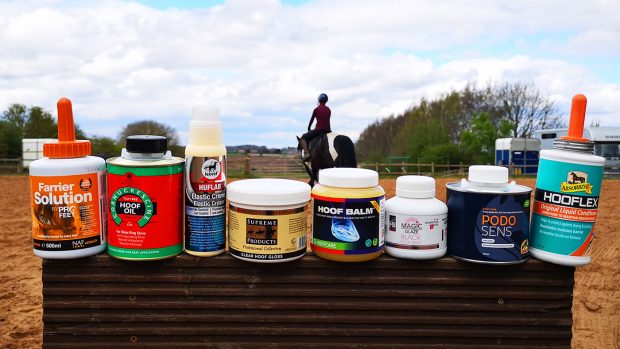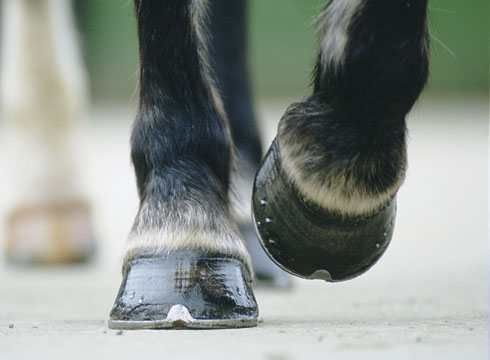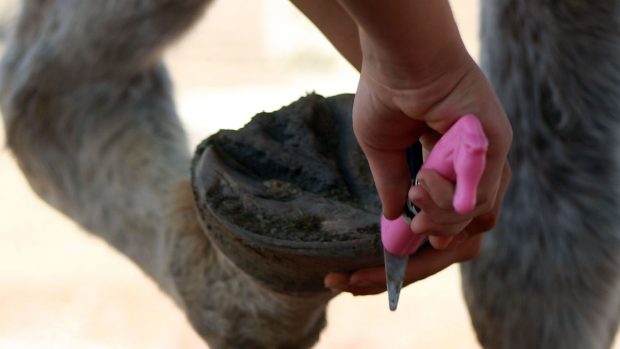Infections of the hoof capsule and horn of horses’ feet are becoming increasingly common with vets treating many more cases now than was normal 10 years ago. However, there are some simply steps that owners can take to help ensure their horse has a strong set of healthy hooves with good horn, which will help prevent bacteria from entering the hooves in the first place.
A balanced diet
The first step is a balanced diet, which contains specific vitamins and minerals so the horse can thrive and work to the best of his abilities.
“It is important to strengthen the horn from inside, as well as reducing the bacteria and fungi from outside,” explains Dr Susan Kempson, of the Royal (Dick) School of Veterinary Studies at the University of Edinburgh, who has been researching the effects of using a topical disinfectant to treat hoof disease.
“I usually recommend that owners feed a high-fibre diet, preferably with some chopped alfalfa included, depending on the horse’s individual requirements. Older horses may also benefit from a glucosamine supplement to promote joint mobility, but ask your vet or nutritionist for advice.”
Supplements
Horses prone to hoof abnormalities may also benefit from a specific dietary supplement to promote horn growth, but Dr Kempson urges caution regarding general supplementation, due to problems caused by excesses of certain nutrients.
“It is very important that owners do not feed any supplements containing excess selenium, methionine or high levels of vitamin A or vitamin D, as they can all be detrimental to hoof horn health,” she explains.
“As an example, a horse given a feed balancer, plus cod liver oil and excessive amounts of carrots in one week could be receiving toxic levels of vitamin A. Furthermore, never trust a supplement if the manufacturer does not put a list of ingredients and guaranteed analysis on the packaging.”
An hygienic environment
Many bacteria thrive in low-oxygen environments such as wet bedding, so good stable hygiene is a must. Stable ammonia can also damage the horn, and once a horse has some kind of horn abnormality, organisms will enter the tissues of the hoof and proliferate.
“The bacterial culprits particularly love warm, moist, anaerobic conditions, which is why horn abnormalities are particularly common in wet summers like last year’s,” says Dr Kempson.
Regular farriery treatment
Make sure you secure the services of a good farrier – alongside your vet, he or she will be a key factor in the recovery of a horse with hoof abnormalities via regular trimming and/or shoeing. A list of registered farriers is available from the Farriers Registration Council, and its website offers a postcode search for farriers in your area – visit: www.farrier-reg.gov.uk
Hoof maintenance
Don’t be tempted to use non-breathable topical dressings, as bacteria could be sealed underneath them. If your horse has a bacterial or fungal infection, consider treating the foot with disinfectant.
First wash the area with a clean brush and allow the foot to dry. Then work a non-toxic, antifungal and antibacterial product into any cracks.
“Greasy dressings just make the situation worse by cutting out the oxygen,” says Dr Kempson. “The disinfectant we used allowed the horn to breathe.”
|




